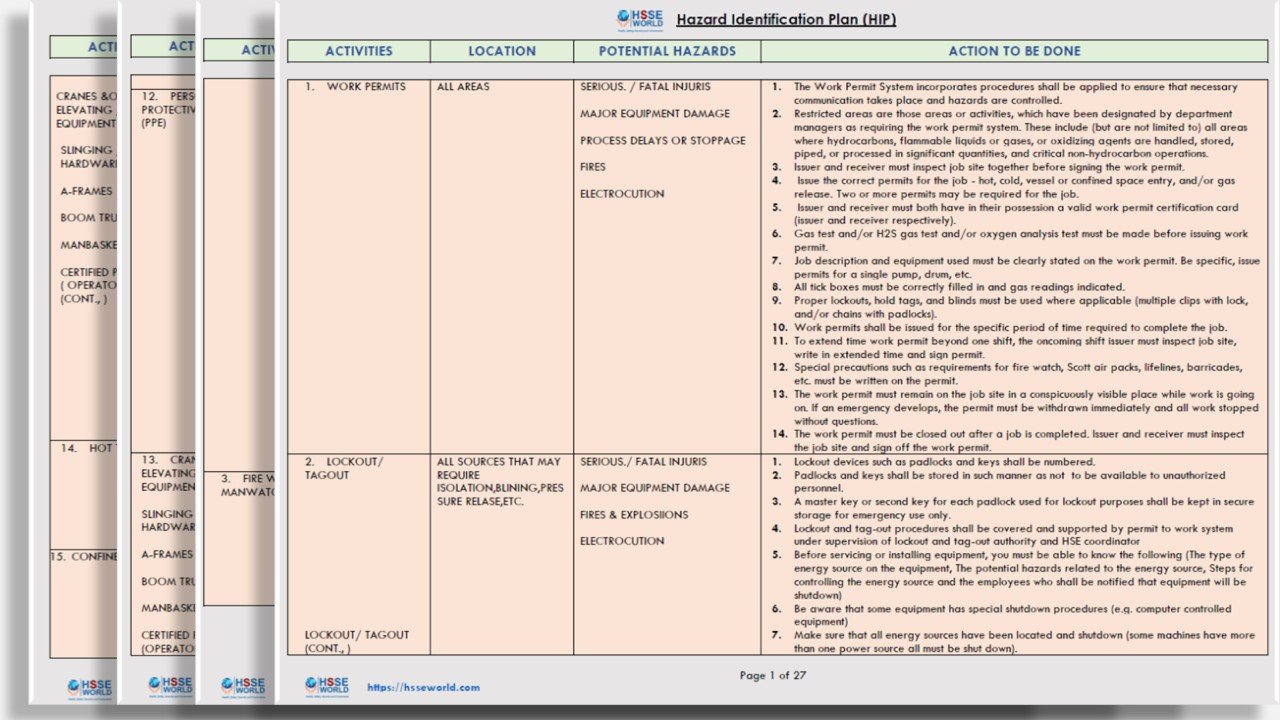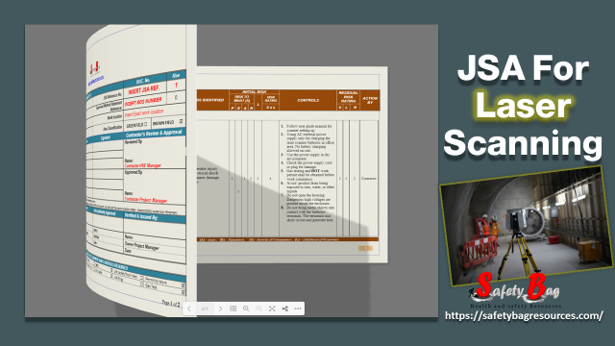The Below JSA is prepared as a guideline for Soil Investigation and Geotechnical survey work according to the following Method of statement.
THE SCOPE OF WORK
A geotechnical investigations program will be prepared, keeping in view the site conditions, the
project components and to fulfill the mentioned objectives in line with the scope of work, as
described below.
Package – 01
- Surveying and Staking out of the borehole locations at the site in accordance with the locations
/ coordinates provided by the client. - Drilling and sampling of sixteen (16) boreholes up to a depth of 10.0 to 30.0 m below existing
ground level. - Performance of two (02) Thermal Resistivity Tests.
- Performance of two (02) Electrical Resistivity Tests at a specified location using an electrode
spacing of 1.0 m, 2.0 m, 5.0 m, and 10.0 m.
Package – 02
- Drilling and sampling of eight (08) boreholes up to a depth of 20.0 m below existing ground
level. - Performance of one (01) Thermal Resistivity Test.
- Performance of one (01) Electrical Resistivity Test at a specified location using an electrode
spacing of 1.0 m, 2.0 m, 5.0 m, and 10.0 m. - Carrying out restoration of the area i.e. backfilling of test pits and boreholes and reinstalling
asphalt - Performing laboratory tests to determine pertinent engineering and index properties as well as
the chemical properties of the strata encountered at the project site. - Analyzing the field and laboratory tests data and submitting an engineering report, furnishing
recommendations for the design and construction of foundations and earthwork for the
proposed structures at the site.
Also Read: Booklet: Electrical Safety Worksite Do’s and Don’t
INVESTIGATION METHODOLOGY
Keeping in view the scope of work and specifications generally followed for the detailed
geotechnical studies, a program of fieldwork will be prepared. The exploratory borings will be
drilled using straight rotary drilling rigs. Field tests will be performed at designated locations in
accordance with relevant ASTM standards and Saudi Aramco specifications. Soil samples will be
collected from designated depths from boreholes using appropriate samplers for identification and
subsequent laboratory testing. Selected soil samples will be subjected to various laboratory tests for
evaluation of the classification, strength, and chemical characteristics of the subsurface strata. The
laboratory tests will be performed in accordance with the relevant ASTM standards
Read the Job Safety Analysis by Flipping the File below :
The above JSA is guidance and you can modify and adapt it to fit your work activity and work location
FIELD INVESTIGATIONS
The proposed fieldwork consists of exploratory drilling and sampling of the subsurface soil samples
and the performance of field tests at designated locations. The borehole locations are decided by the
client and will be marked in the field by RGF.
SURVEY OF TEST LOCATIONS
take coordinates and elevations of the locations. The coordinates and elevation of the test locations will be measured using differential GPS by deploying the RKT method.
EXECUTION OF BOREHOLES
The boreholes of the required depth below the existing grade level will be executed using the straight rotary drilling method. The drilling of boreholes will be carried out using truck-mounted ACKER ADII
drilling rigs equipped with an automatic hammer. The subsurface stratum will be penetrated by the rotary
drilling method using the wash boring technique. Bentonite slurry of suitable consistency will be
circulated as a drilling fluid to provide stability to borehole walls. After completion of the testing,
boreholes will be backfilled with a mixture of cement, bentonite, sand, and water. The grout backfill
materials will be proportioned to a groutable / pourable consistency and the proportions varied as per
the specific requirements.
The borehole logs will be prepared in the field and a description of soil samples recovered will be
shown in the respective borehole logs. Field borehole logs will be developed on the basis of the
materials encountered at the site and will be later confirmed/modified by the laboratory test results.
Also Read: What is the Difference between Intrinsically Safe and Flameproof Equipment?
EXCAVATION OF TEST PITS
Test pits will be excavated at the specified locations up to a maximum depth of 1.20 m below
the existing grade level by hand excavation. The test pits will be carefully logged during excavation
and field logs will be developed, which will be finalized after laboratory testing.
Download The JSA
JSA-Soil Investigation-geotechnical Survey Work




